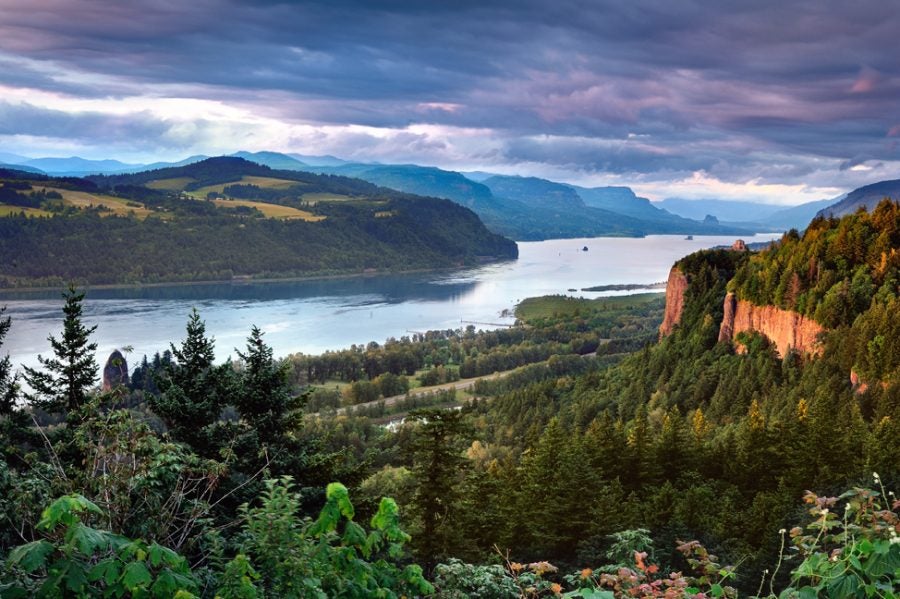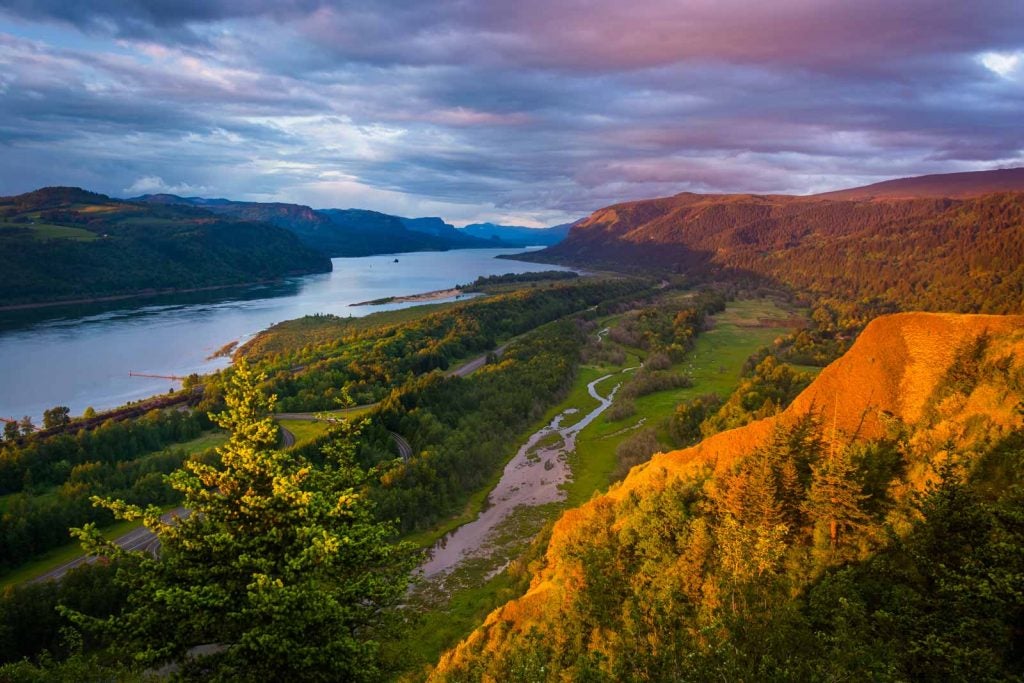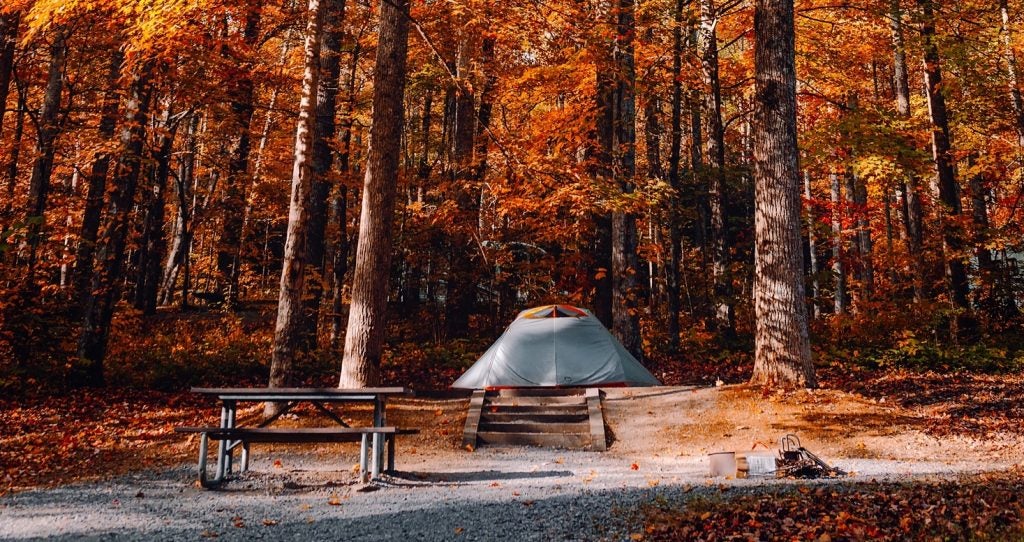Eagle Creek Fire & Columbia River Gorge Restoration
In September, 2017, the Eagle Creek forest fire burned more than 48,000 acres of land on the Oregon side of the Columbia River Gorge. This damaged approximately 100 miles of trail and led to the closure of 42 whole trails in the area. Many of these trails were long-time favorites for visitors and locals, which has been a disappointment to many.
There are a few positive things that can be taken away from this:
- Forest fires are a natural part of a forest’s life cycle and can actually be quite beneficial to the health of a forest.
- The closure of popular trails also presents an opportunity for hikers to explore new areas within the Gorge.
- There is ongoing Columbia River Gorge restoration taking place in damaged areas; improvements will be made throughout the Gorge.
The Columbia River Gorge provides visitors with recreational opportunities and a bounty of natural and cultural resources. It is no secret that this area along the border of both Washington and Oregon has become a scenic icon worth preserving. Within this 85-mile river canyon, you can find temperate rainforests, grasslands, high mountain vistas, 15 species of wildflowers that you will find nowhere else in the world, more than 200 bird species, and more than 77 waterfalls.
We talked with Steve Kruger, the Executive Director at Trailkeepers of Oregon and Renee Tkach, the Project Manager at Gorge Towns to Trails, to find out what the current Columbia River Gorge restoration efforts look like, how you can get involved, and what is in store for the future of the Gorge.
https://www.instagram.com/p/BjWg3AXABZr/?utm_source=ig_embed
Columbia River Gorge Restoration & Trail Recovery
“We have been booking out our trail working parties before we are even able to post them on Facebook. The response has been incredible.” — Steve Kruger of Trail Keepers of Oregon
The Gorge Trail Recovery Team was formed in September 2017 in response to the Eagle Creek fire. This group is comprised of volunteers and is overseen by several larger organizations, including the Trailkeepers of Oregon, Washington Trail Association, and Friends of the Columbia Gorge. The recovery efforts will move in three phases, which include fire suppression repair, assessment of threats to human life and safety, and long term Columbia River Gorge restoration like trail cleaning and rebuilding.
Most of the 42 trails that were damaged by the fire will likely remain closed throughout the summer of 2018. Steve let us know that a few areas that were mildly damaged or close to the fire have opened. These areas include Starvation Creek, Bridal Veil Falls and Vista House. He was happy to tell us more about how Trailkeepers of Oregon is involved in getting more of the damaged trails ready for hikers to traverse. The work started in January.
“We had some of our more experienced volunteers scout fire-affected trails and do initial trail corridor clearing,” said Steve. “With our friends at the Pacific Crest Trail Association (PCTA), we started trail work on the Pacific Crest Trail from Cascade Locks to the Herman Creek area.” He added that, in March, six months after the fire, TKO finally returned with tools in hand to Angel’s Rest, to start to “improve the trails to a standard like never before.”
The consistent strategy for the recovery teams, including TKO, has been to work with volunteers in the most damaged and concentrated areas. “There are a lot of people who are eager to get out and help us,” said Steve. “We have been booking out our trail working parties before we are even able to post them on Facebook. The response has been incredible.”
Because the trail parties keep booking out so fast, Steve says the best way to stay up-to-date on upcoming trail parties is to sign up for their newsletter on the Trailkeepers of Oregon website, or to follow them on Facebook. Before signing up, you can find more information about what volunteering for a trail crew is actually like in this Friends of the Columbia Gorge Q&A.
“There are a lot of people who care tremendously about the outdoors, and especially the Columbia River Gorge,” said Steve. He added that it is important to remember that there are a lot of areas in Oregon that deserve our attention and TKO works all over Northwestern Oregon, not just in The Gorge. “We have a small organization and the truth is that people power is only as powerful as the support they have behind them. For those who want to help us out, but don’t have the time or ability to physically get out on the trails, donating money is an excellent option that will help us do more outreach and ultimately to get more done.”
He added that TKO, the Pacific Crest Trail Association, Washington Trails Association, and similar organizations will continue working on Columbia River Gorge restoration and trail improvements until they are safe for hikers again. The amount of time it will all take is still unclear.
What is exciting to Steve is the number of people who are stepping up to get involved. and help out with the ongoing efforts. The amount of awareness surrounding the Eagle Creek fire is making people more aware of issues surrounding safety and environmental protection. This education will do a lot to help these groups protect our trails in the future.
You can stay-up-to-date on trail and Columbia River Gorge restoration through Friends of the Columbia Gorge and the U.S. Forest Service.
The Future of The Columbia River Gorge
Friends of the Columbia Gorge was founded back in 1980 to protect the area from encroaching urban development. They continue to preserve and protect through restoration projects and the larger Gorge Towns to Trails project. Replanting efforts on land owned by the Friends of the Columbia Gorge Trust, and removal of invasive species is an ongoing effort. They also provide public education through annual events and youth educational programs.
Gorge Towns to Trails is designed to continue improvement and preservation in the Gorge, while also making it beneficial for the local economies of nearby towns. The long term vision is to create a 200-mile loop trail around the entire Columbia River Gorge Natural Scenic Area. This will connect “small towns, farms, wineries and wild areas together.” Renee Tkach is the Project Manager for Gorge Towns to Trails, and she was happy to give us some updates on what this project is and what has happened recently.
“One of our goals is to reduce traffic, while providing easier access to the trails within The Gorge. A good example is the new shuttle service to Dog Mountain, which just opened in June,” said Renee. “There is a lot of opportunity in the Gorge. We want people to visit the incredible towns in the area and explore the trails.”
Renee shared with us that the most recent milestone for Gorge Towns to Trails was purchasing a few large pieces of land to add to the 200-mile trail project. They purchased 160 acres and seven pieces of land total.
“This will bridge the gaps of public land on the trail between Washougal and Stevenson in Washington,” said Renee. “Beginning this fall (2018) we will also begin work on building a trail in Lyle.”
There is so much to do and see, on both the Washington and Oregon sides of The Gorge, that Renee doesn’t think the closed areas will impact locals and tourists ability to enjoy the area this summer. “I live nearby and I have an ongoing goal to hike every trail in The Gorge,” said Renee. “After 15 years, I still haven’t been able to get to them all. There is just so much terrain to explore here. Despite the trail closures from the fire, I just encourage people to get out there and try something new.”
The Dyrt is the only camping app with all of the public and private campgrounds, RV parks, and free camping locations in the United States. Download now for iOS and Android.Popular Articles:
Articles on The Dyrt Magazine may contain links to affiliate websites. The Dyrt receives an affiliate commission for any purchases made by using such links at no additional cost to you the consumer.



